Ever wonder what a “bland diet for dogs” really means? After all, it sounds rather vague. Integrative veterinarian Dr. Julie Buzby explains everything you need to know about bland diets, including the different foods that count as “bland.” That way, you can confidently feed some bland meals to your dog should the need arise.
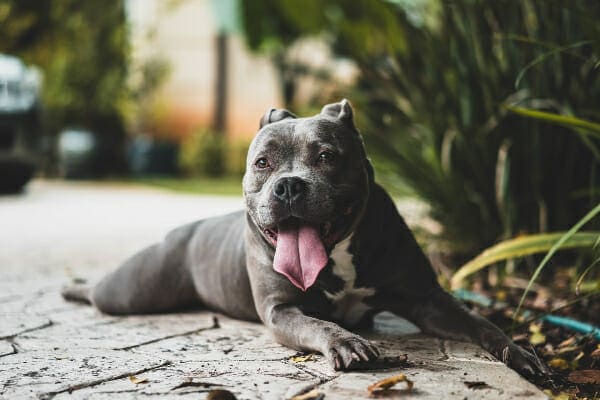
Dogs love to eat things they shouldn’t—rotten food, dead animals found in the woods, swampy water, etc. The smellier the better. A few hours later, they may pay the price for their little treat with abdominal pain, vomiting, and/or diarrhea. When this happens, your veterinarian will likely recommend you feed your dog a bland diet.
And the same recommendation holds true if your dog is struggling with GI upset for a variety of other reasons. Bland meals can be a great way to soothe your dog’s angry digestive tract and get his or her paws on the road to recovery.
What is a bland diet for dogs?
When the vet recommends a bland diet, what he or she is referring to is a highly digestible diet that is typically low in fiber and fat and high in carbohydrates. Less fiber means the dog shouldn’t have to go to the bathroom as often. And diets with lower fat and higher carbohydrates are usually easier on the digestive system.
Typically, your vet will recommend feeding your dog bland meals as a replacement for their regular dog food, not in addition to their regular food. But your vet will let you know what is right for your dog.
When explaining the purpose of bland meals to my veterinary clients, I compare it to when we are recovering from the stomach flu. We aren’t going to order a pizza. Instead, we usually eat chicken noodle soup, crackers, and maybe lightly-buttered toast.
Why feed your dog bland meals?
Since a bland diet is designed to be easy on the GI system, it would make sense that GI problems are one of the main reasons a dog may need to eat bland meals.
Feeding a bland diet for dogs with gastroenteritis
Probably the most common reason a dog will need a bland diet is gastroenteritis. This is a fancy term which refers to inflammation of the stomach and intestines. But really, you can just think about gastroenteritis as garden variety vomiting and diarrhea.
Dogs may have an upset stomach for a variety of reasons including:
Dietary indiscretion
If you’re the parent of a garbage-scrounging hound or a dog who just can’t say “no” to tasty tidbits on a walk, you may already know that the medical term for eating gross things is “dietary indiscretion.”
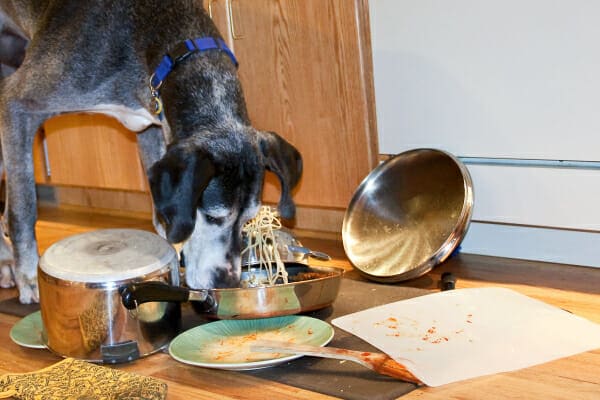
As we discussed (and you may have experienced), these seemingly tasty “delicacies” can wreak havoc on your dog’s digestive system. If your dog has gastroenteritis from eating something bad, a bland diet may help with the diarrhea and vomiting.
Viruses and bacteria
A variety of viruses, some more serious than others, can affect a dog’s GI system and cause vomiting and diarrhea. Some of them are rapidly self limiting. But others, like parvovirus, can be quite dangerous or even fatal (especially in puppies). If your vet suspects your dog has mild gastroenteritis, he or she may suggest a bland diet for a few days. But if your dog’s case is more severe, he or she may need to be hospitalized for intensive treatment.
Overgrowth of the normal bacteria in the intestines (i.e. small intestinal bacterial overgrowth or SIBO) can also lead to diarrhea. And so can the growth of pathogenic (i.e. disease-causing) bacterial within the intestinal tract. Dogs with these conditions may need other treatments, such as antibiotics or probiotics. But bland meals are often part of their treatment plan as well.
Parasites
GI parasites such as whipworms, hookworms, roundworms, giardia, or coccidia can cause intestinal upset in some cases. While the dog will also need deworming medication to get rid of the parasites, feeding bland meals can be a great way to support the GI tract as it heals.
Feeding bland meals during recovery from GI surgery
Bland diets are also essential to patients recovering from gastrointestinal surgery. This is especially the case if the dog had a foreign body removed from the stomach or intestines. My mentor taught me that “a healthy gut is a working gut.” The intestines heal much quicker when food is passing through. However, because the GI tract is recovering from surgery, we want an easily digested diet that won’t make the gut work too hard.
Bland diets for stress diarrhea (or diarrhea from other causes)
Some dogs develop stress diarrhea at predictable times, such as during holidays, when boarding, or on road trips. In these cases, starting a bland diet before the stressful event may help to prevent stress diarrhea from developing.
Additionally, a bland diet may be all a dog who is having diarrhea but acting fine needs to recover.
Low-fat bland diets can help dogs with pancreatitis
Your vet may recommend a low-fat bland diet for cases of pancreatitis in dogs (i.e. inflamed pancreas). Since a high-fat treat can trigger a pancreatitis episode, it would make sense that a low-fat bland meal could be the solution to the problem of what to feed a dog with pancreatitis.
Feeding bland meals for dogs with other medical conditions
Additionally, certain medical conditions may require you to feed a bland diet. Vets often treat protein-losing enteropathies (i.e. conditions where the dog loses protein through the GI tract) such as intestinal lymphangectasia in dogs (i.e. dilated lymphatic vessels in the GI tract) with a low fat, highly digestible diet in addition to medication. Also, a bland diet may help lessen the signs of inflammatory bowel disease (i.e. IBD in dogs).
Your veterinarian may also try bland meals for management of patients with megaesophagus in dogs (i.e. a dilated and poorly functioning esophagus), megacolon (i.e. a dilated and poorly functioning colon), gastric ulcers, acid reflux in dogs, or sensitive stomachs.
It is important to note that these medical conditions may respond to a bland diet. But each dog is different. Some dogs with the conditions listed may need a hydrolyzed protein diet (i.e. one where the protein is broken up into tiny pieces the immune system shouldn’t react to) or a diet with higher fiber for dogs. Follow the guidance of your veterinarian to determine the best food for your dog.
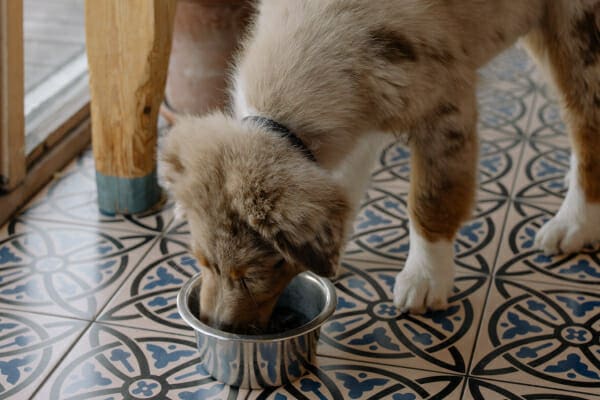
Where can I get a bland diet for my dog?
Some pet parents prefer the convenience of purchasing a bland diet from their veterinarian while other people would rather cook bland meals. There really isn’t one best bland diet for dogs. Instead, there are many great options.
Prescription bland diets available through veterinarians
Because GI problems are so common in our patients, most veterinarians have bland diets readily available in their clinics. These foods are specifically formulated prescription diets that are manufactured by trusted pet food companies. Some of the options include:
- Hill’s Prescription Diet i/d Digestive Care (which also comes in i/d Stress, i/d Low Fat, i/d Sensitive, and i/d Small Bites)
- Hill’s Prescription Diet Gastrointestinal Biome
- Purina Pro Plan Veterinary Diets EN Gastroenteric formula (also available as EN Gastroenteric Low Fat, EN Gastroenteric Fiber Balance, and EN Gastroenteric Naturals)
- Royal Canin Gastrointestinal (also comes in Gastrointestinal Moderate Calorie, Gastrointestinal Low Fat, Gastrointestinal Puppy, and Gastrointestinal High Fiber formulas)
Additionally, there may be other diets available in your area. Ask your veterinarian for recommendations.
One of the benefits of these diets is that they are nutritionally complete and formulated so that they can be safely fed long-term. This means that if your dog has a condition that requires bland meals for the foreseeable future, commercially formulated bland diets are often the way to go.
(Alternatively, you can work with a veterinary nutritionist who can create a homemade bland diet recipe that is suited for long-term use. The bland foods we are about to discuss do not fit that bill on their own.)
What bland foods can I feed my dog?
Alternatively, you can cook a bland diet for your dog with simple ingredients you have at home. The bland diet recipe consists of a carbohydrate and a protein. Typically, you would mix them in a 2:1 ratio (two parts carbohydrate to one part protein). But your vet may direct you to use a different ratio in some situations.
Carbohydrate sources
There are a variety of different carbohydrates you could consider:
- White rice or brown rice—Boiled or steamed rice is the most common carbohydrate source in bland meals. When cooking it, don’t add any butter, oil, or other seasonings.
- Sweet potatoes—Baked or boiled cubed sweet potatoes with no butter or other seasonings (or canned sweet potatoes if they don’t contain a lot of sodium) can be a great bland diet alternative to rice.
- Oatmeal—Cooked oatmeal (with nothing added to it) is also a bland food that is safe for dogs.
- Plain noodles—Boiled noodles (without butter, salt, or other seasonings) are also an option.
- White bread—In a pinch, some dog parents may also use plain (non-buttered) white bread.
Then, once you have selected a carbohydrate for that meal, you can move on to picking a protein.
Protein sources
Some good protein sources for bland diets include:
- Baked or boiled chicken breast—When cooking chicken, remove the fat before cooking and skim or scrape off any fat that comes out during the cooking process. And avoid giving your dog chicken skin or bones.
- Turkey breast—Like chicken breast, baked or boiled turkey breast is also a good low-fat protein source. Just ensure you remove any fat and don’t feed your dog turkey skin or bones.
- Lean ground beef—Boiling the ground beef is a great way to remove most of the fat from the meat. Or you can bake it or cook it on the stovetop (but drain all the grease off before serving it.)
- Lean ground turkey—Baking, boiling or cooking lean ground turkey on the stovetop can also be a good option. But ensure you drain any grease off and don’t add additional seasoning.
- Scrambled eggs or hard-boiled eggs—Yes, scrambled eggs are a bland diet for dogs when cooked without any oil, butter, or other ingredients. And hardboiled eggs also work well. However, eggs are a bit higher in fat than some of the other alternatives.
- Low-fat cottage cheese or low-fat yogurt—While they do provide protein, dairy products can sometimes be hard on a dog’s stomach. So they aren’t always my first choice for a sole protein source. They can make an appetizing topper for a bland meal, though.
- Meat baby food—Plain meat baby food (i.e. without added fruits or vegetables) does count as a bland protein source for dogs. It may not be practical to feed it as the sole protein. But adding a bit on top of a bland meal can do a great job enticing a reluctant pup to eat.
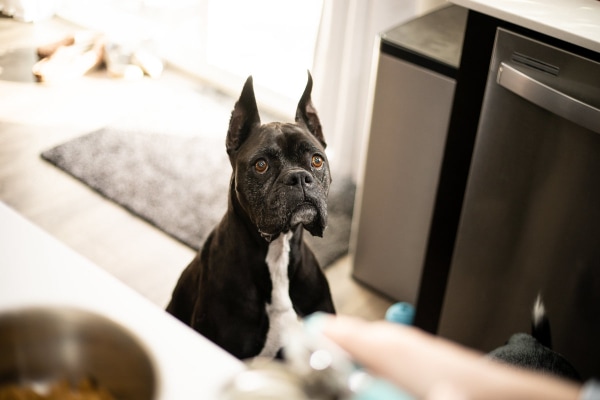
Safety note about homemade bland meals
Unlike the prescription bland diets, these homemade bland diets are not nutritionally suitable for long-term use as they lack important nutrients. However, feeding them for a short course of one to two weeks is acceptable for most dogs. Should you end up deciding to feed homemade bland meals for a longer period of time, it is important to consult with a veterinary nutritionist. He or she can help formulate a bland diet recipe that is complete and balanced.
How much of the bland diet should I feed my dog?
Once you have purchased or cooked the diet, I recommend feeding your dog small frequent meals so you don’t overload the GI tract. Instead of two meals a day, divide a day’s worth of food into four to eight meals. If there is any vomiting, take food and water away for a few hours then reintroduce a small amount of both.
How long should I feed my dog a bland diet?
In some cases, the dog will only need the bland diet for a short period of time. For example, for dietary indiscretion, the vet will often recommend a bland diet for four to five days. After this time, you can typically transition your dog back to the regular diet. To do this, mix the bland diet with his or her regular food over the next two to three days. During that time, gradually increase the amount of dog food and decrease the amount of bland food until your dog is totally on his or her dog food again.
Note: If your dog continues to have GI upset after two days or if the signs return once you resume feeding the regular dog food, contact your veterinarian.
However, some medical conditions such as IBD, chronic pancreatitis, or megaesophagus may require the dog to be on a bland diet (or other special diet) for the rest of his or her life. If this is the case, you should either purchase a prescription diet that is already nutritionally complete or work with a board-certified veterinary nutritionist to formulate a complete and balanced homecooked diet for dogs.
How else can I support my dog’s digestive health?
In addition to feeding bland meals, there are several other tools your vet may recommend. These include:
Probiotics for dogs
In most cases of diarrhea, the dog has bacterial dysbiosis in the intestinal tract. That means the bacterial balance in the GI tract has been disrupted. Probiotics contain “colony forming units” (i.e. bacteria) that help replenish the good bacteria lost in the GI tract. They are often available from your veterinarian or through an online pet care retailer as a powder that you can sprinkle on your dog’s food or as a chewable tablet.
Prebiotics for dogs
This “bacterial food” is often included with probiotics. Unlike probiotics, prebiotics do not contain bacteria. Instead, prebiotics improve the environment of the gut so that the healthy bacteria are more likely to grow. You may find prebiotics in some commercial dog foods. For example, Hill’s Prescription Diet Gastrointestinal Biome contains prebiotics in addition to being easy to digest.
Canned pumpkin
Canned pumpkin for dogs also contains prebiotics to promote GI health. Plus, it is a good source of fiber, vitamins, and minerals. And dogs tend to think it is tasty. Often, adding some canned pumpkin to your dog’s bland meal can be a great way to improve his or her GI health and also encourage him or her to eat.
But ensure you only buy regular canned pumpkin, not canned pumpkin pie filling. Unfortunately, pumpkin pie filling can contain spices or harmful ingredients like xylitol, which is toxic for dogs.
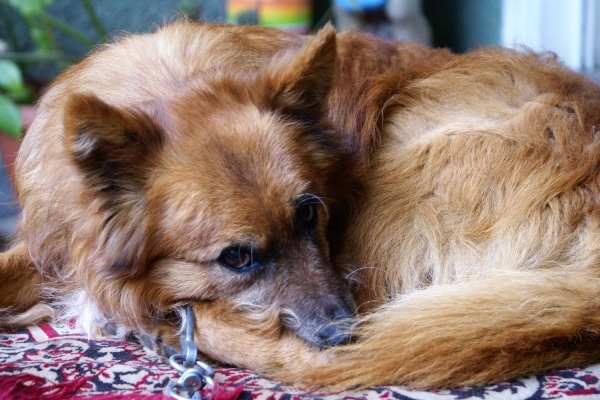
What do I need to watch out for when feeding a bland diet to my dog?
While feeding bland meals (plus giving any medications recommended by your vet), keep a close eye on your dog. Contact your vet if you notice any of the following signs:
- GI signs that last more than 48 hours without improvement
- A lethargic dog
- Bloody vomit or diarrhea
- Signs of pain in dogs (such as standing stretched out or in a play bow position, both of which may indicate abdominal pain)
- Worsening GI signs such as profuse vomiting
- Return of GI signs once you finish the medication or bland diet
- Abdominal distension (i.e. pot-bellied dog appearance)
- Signs of dehydration (dry or sticky gums, skin that remains tented when lifted, sunken eyes, or noticing your dog’s nose is dry)
Work with your veterinarian
As always, your veterinarian is the best resource whenever your dog is sick. While it isn’t wrong to try out a bland diet for your dog prior to making a veterinary appointment, please remember the guidelines above. And even after the initial visit, keep your vet apprised of your dog’s condition. Sometimes what seems to initially be a touch of GI upset can be an indication of bigger and more serious problems (including Addison’s disease in dogs).
My goal in saying that isn’t to scare you, though. Chances are good that with some TLC and bland meals, your dog’s digestive woes will be a distant memory in no time. But if they aren’t, ensure that you are in close contact with your veterinarian.
Which bland diet(s) seemed to work best for your dog?
Please share your experience below.
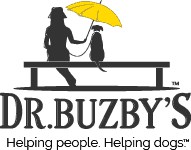
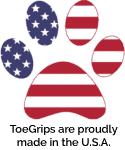
I’ve been feeding my dog, chicken in the insta-pot with low sodium chicken broth instead of water, mixed with rice. I just shred the chicken, use about 1/3 cup of the broth from the insta-pot, and the rice. I can make 8-10 of the smalls plastic ramekins from the dollar store. I freeze half of them and the others in the fridge. When it’s time to feed him twice a day, I microwave half of the ramekin in his bowl for about 10 seconds. He absolutely loves it. He’s a 10 lb chihuahua and is VERY picky.
Hi Lori,
I am glad you have figured out a system that works for you. Thank you for sharing with us! Best wishes to you and your little guy. ♥
I give a mix of equal parts low-fat cottage cheese, pumpkin, quinoa, and boiled ground beef. Works great for us with our 2 Bernese mountain dogs.
Hi Jenny,
It sounds like you have some very lucky pups! Thanks for sharing your experience. Best wishes!
Yes to quinoa! Rice can be inflammatory, non GMO oatmeal is also better choice. Of course, each dog is different.
.
Boiled hamburger and steamed white rice do the trick for my dogs.
After boiling I skim all of the fat off the top of the water then rinse the meat in a colander to get as much of the fat off as I can. One cup (dry) of white rice steamed (makes about 3c) mixed with 1 lb of hamburger seems to be a good mix. I compared the calories in their kibble to figure out how much to feed. It was more than I thought it would be. (~1000cal / 1lb boiled beef, ~220 cal/cup steamed rice).
Hi Shannon,
Thanks for sharing your experience with our readers!